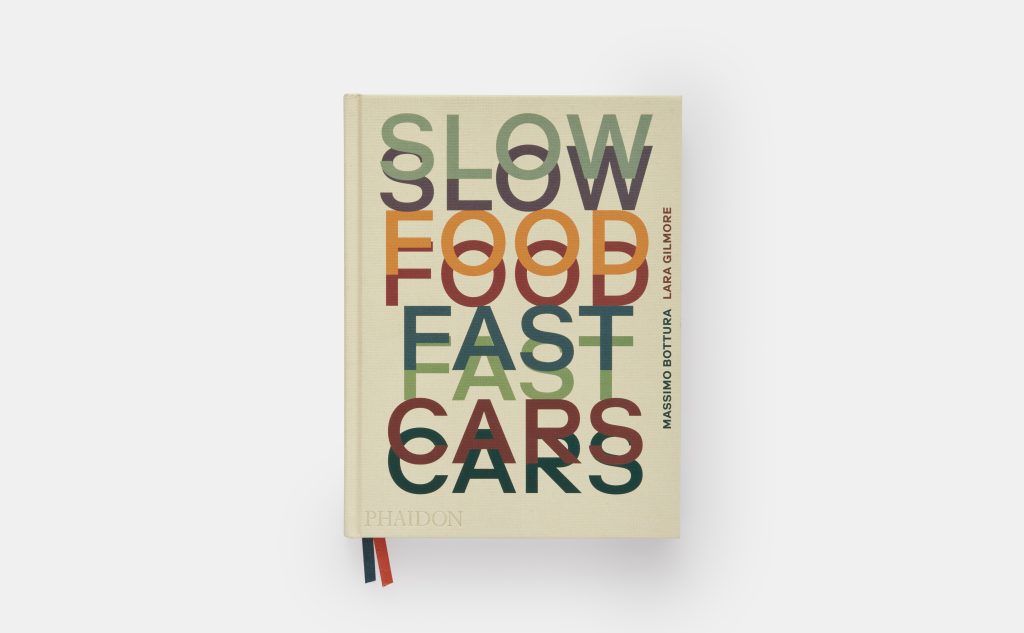Experiencing Massimo Bottura’s Glorious Casa Maria Luigia
The acclaimed chef’s bed and breakfast with Lara Gilmore focuses on food, design and the stunning Emilia Romagna scenery

Anyone who loves food and cars will know the city of Modena in northern Italy. Located in the picturesque Emilia Romagna region, Modena is just over 11 miles from Motor Valley, where Maserati, Ferrari, Lamborghini and many other historic companies produce their vehicles. Emilia Romagna is also known as Food Valley; parmigiano reggiano, prosciutto di parma and balsamic vinegar have been made there for centuries, and for the last 25 years it has been the home of Massimo Bottura‘s beloved three-Michelin-star restaurant Osteria Francescana.
The world-renowned chef—known for tireless experimentation—also opened Casa Maria Luigia, an endeavor with his business partner and wife, Lara Gilmore, just outside Modena two years ago. Nestled within the stunning Emilian countryside, Casa Maria Luigia was named for Bottura’s mother and is abbreviated to “ML” in its logo, also representing Massimo and Lara’s connection. Last year, we visited the unique bed and breakfast, hosted by Bottura and Gilmore, as well as Maserati.
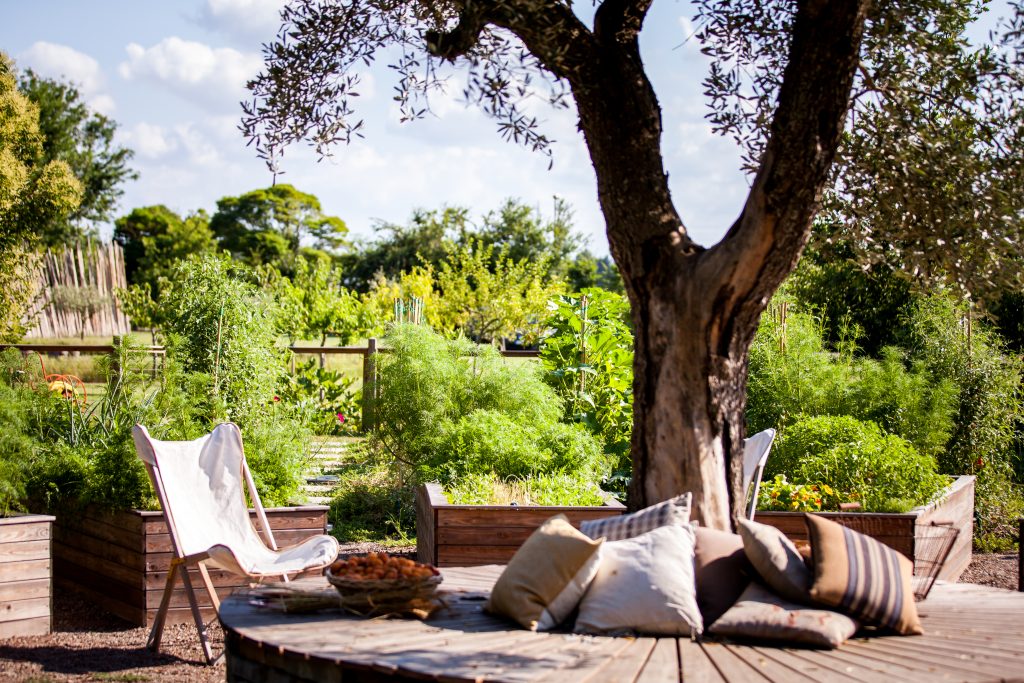
Touring the property with Bottura and Gilmore, there’s no doubt as to the location’s appeal. “We’re immersed in the countryside, surrounded by agricultural fields and heritage trees. We have beautiful oak trees that were planted on this property 200 years ago,” Gilmore tells us. She ties the region’s beauty to its acclaimed food products: “We get all four seasons here. And those four seasons are what make parmigiano reggiano, aceto balsamico and prosciutto such amazing products. They need damp and cold winters, hot and sticky summers.”

Once a working farm, Casa Maria Luigia has been transformed, with the main structure now a 12-room guest house. In November 2020, they opened Luigina, an independent three-bedroom villa on the property with a kitchen, living room and a garden and pool. Guests can book it for private stays.

“We like to say ‘bed and breakfast’ because Massimo and I are not in the hotel business,” Gilmore continues. “We’re in the restaurant business. So we think of this place as an Osteria Francescana with rooms. The focus here is on food, the landscape and communicating to our guests where they are. It’s essential to us that someone who comes and stays with us or has dinner with us one night or comes in has brunch has this idea of what Emilian landscape looks like, sounds like, smells like and tastes like.”
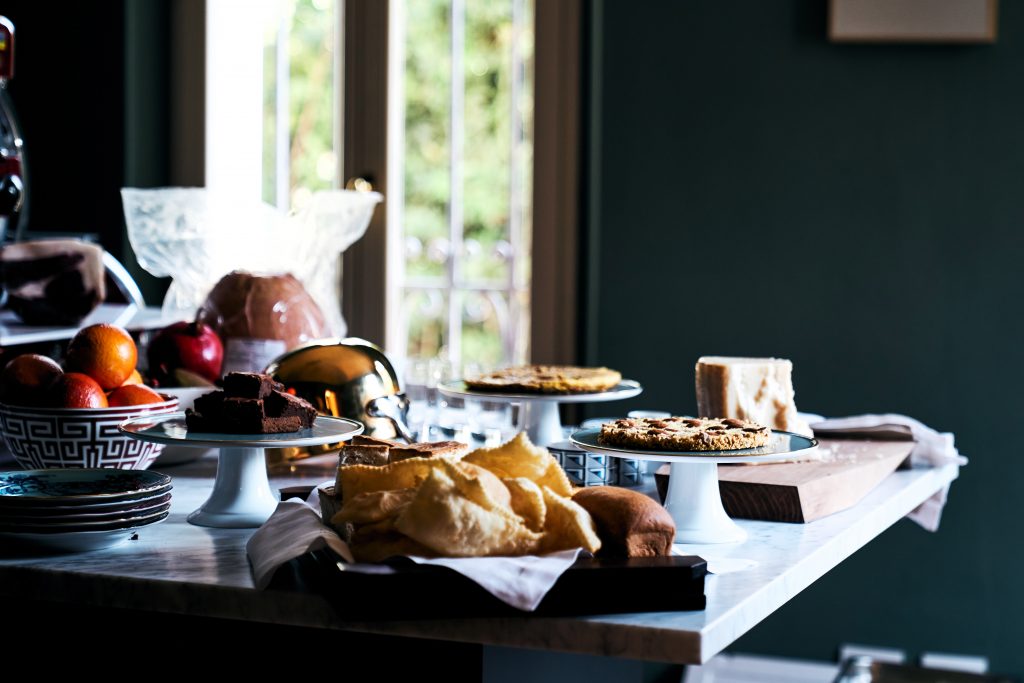
Truly an extension of Osteria Francescana, the restaurant here—called Francescana at Maria Luigia—honors the first 25 years of the Modena restaurant. “We wanted to bring our classic dishes—the most iconic ones—to the country, to safeguard our past and bring it to life in a different context,” Bottura tells us. “We created a kitchen without walls to allow our guests to look over and feel part of our history, participate, observe closely, ask questions and interact with all the staff. We don’t have individual tables but four large tables to share. All with the right distance—but still at the same table.”
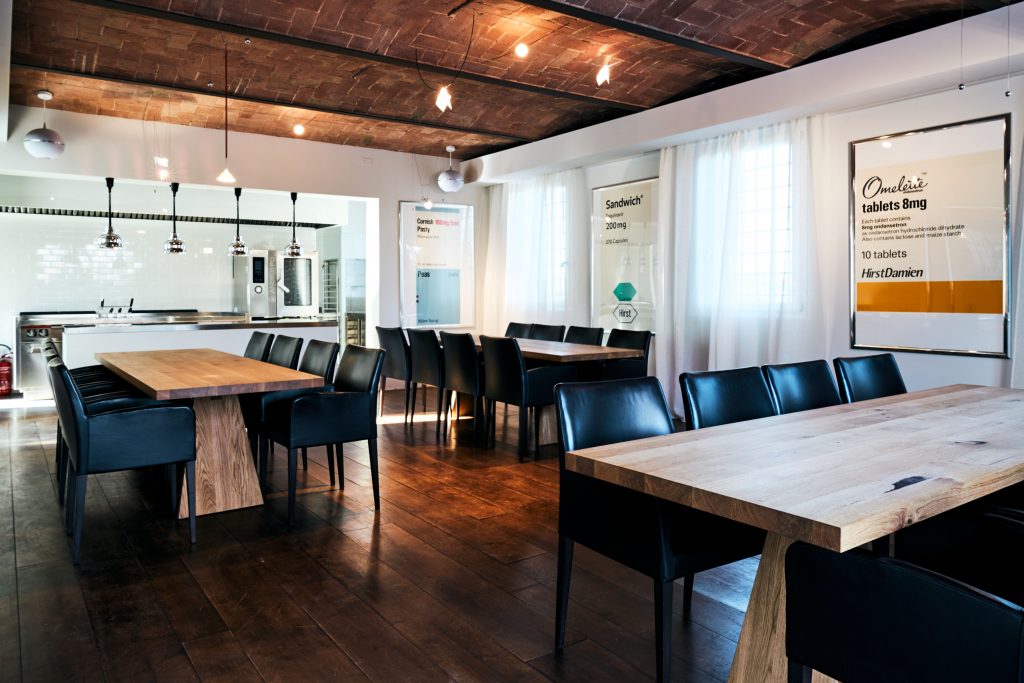
This set-up was inspired by Milan’s Refettorio Ambrosiano—an initiative by Bottura and Davide Rampello. “Sharing has changed the whole atmosphere of the place. You share a meal around that table but, above all, an experience—just like when you are invited to a friend’s house,” Bottura says. “Then comes the storytelling, a fundamental part of my cooking. The dishes are contextualized in time and space. They talk about our history, the territory, the landscape. They evoke emotions.”
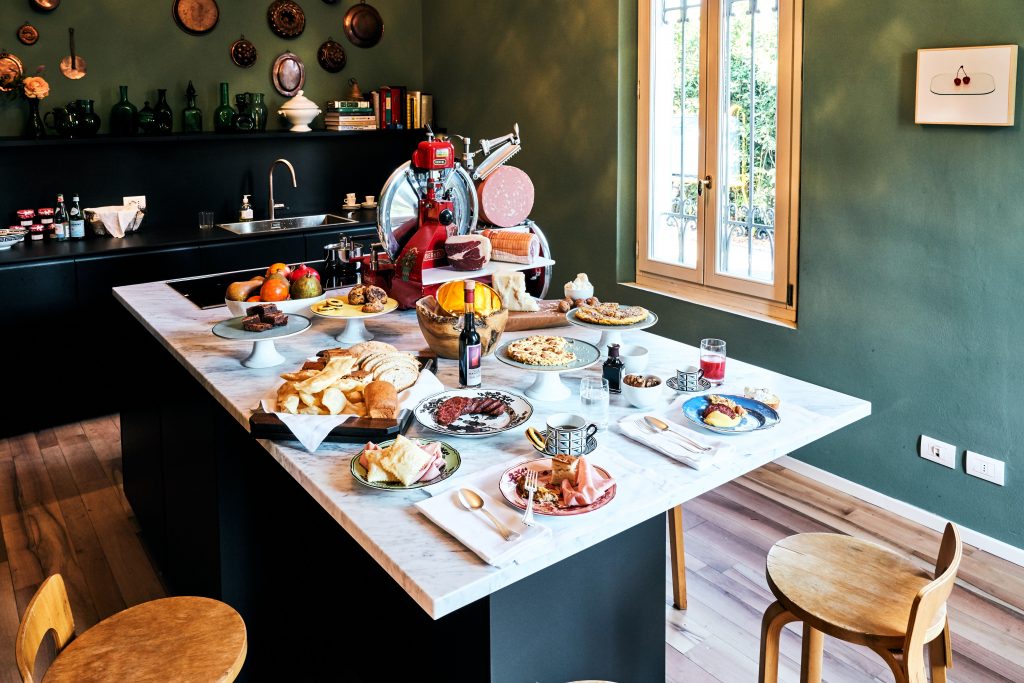
Francescana at Maria Luigia’s breakfast is all about cotechino, a local pork sausage that’s traditionally eaten on special occasions. Here at Casa Maria Luigia, it is not boiled but cooked in a wood-burning oven, a concept introduced by head chef Jessica Rosval.
“It’s all about the chef,” Bottura says. “She is Canadian and she speaks the same language with smoke and fire, and that’s where the idea came from. Right from the start, we had designed that oven to create snacks, maybe pizza. Then it evolved and during the [spring 2020] lockdown we decided to make it into something more substantial. We put it in the backyard to cook in smoke at 60 centigrades, grill at 250 degrees, up to 500. You come to eat, and you have breakfast like my grandmother was cooking on the stove with wood. Returning to this type of cooking is an inexhaustible stimulus for us.”
While cooking at Casa Maria Luigia may be synonymous with smoke and fire, water remains crucial to Bottura’s approach to food. “Water is truth,” he says. “In cooking, it is purity. Water is an element that is very often underestimated, yet essential to perceive a flavor and its most authentic characteristics. Starting from water to make a sauce or a cream is the best way to achieve an absolute pure result.”
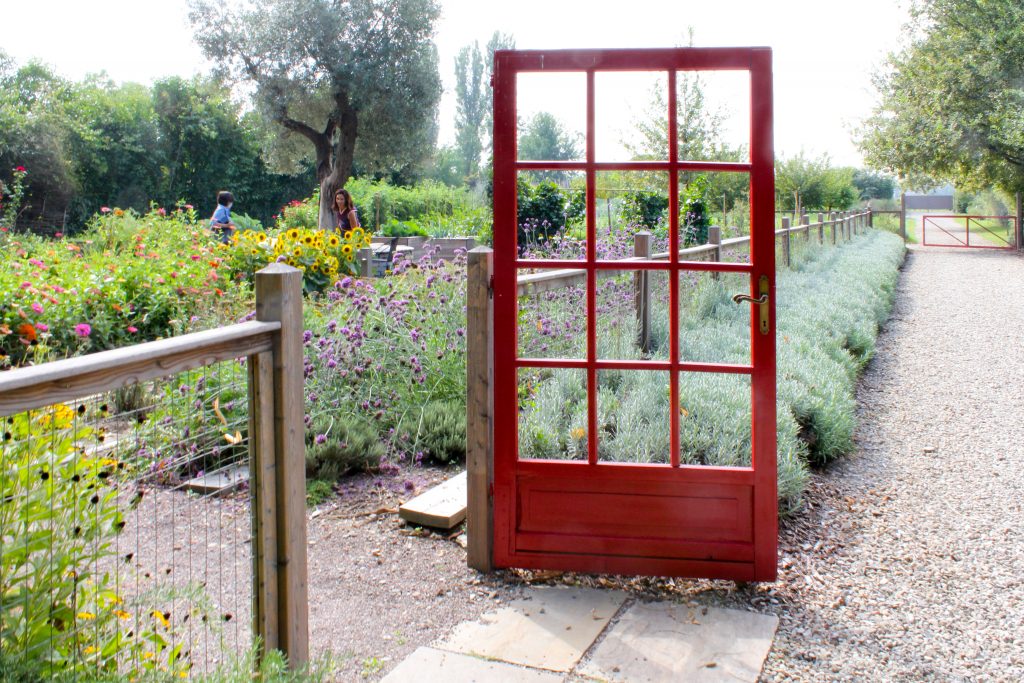
Water is everywhere at Casa Maria Luigia. “Even if you don’t notice it,” he explains. “From the pond to the fountain and swimming pool to the underground aquifers. Without this source, the centuries-old plants and trees would probably not have survived the years of neglect, and we would not have been able to enjoy the wonder of this ancient garden. How crucial can such a simple element be? The connector of flavors as well as memories.”
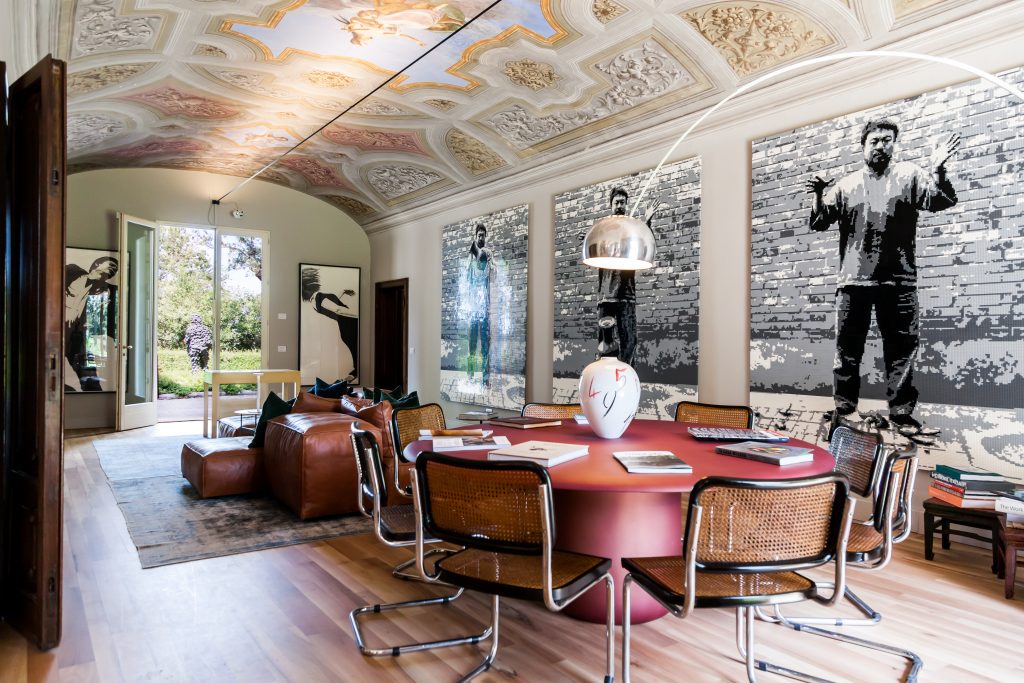
Not only can guests explore this verdant environment outside (including a vegetable garden with a whimsical red door), but it’s visible from almost every window. The lush scenery provides a glorious juxtaposition with the design-forward, art-covered indoors.

Casa Maria Luigia’s common areas and rooms are decorated with an exceptional collection of contemporary art that extends outside. Pieces by Ai Weiwei, Vanessa Beecroft, Tracey Emin, Matthew Barney, Joseph Beuys, Luigi Ontani, Mimmo Palladino and others adorn every corner. Beyond fine art, guests can enjoy the vast vinyl collection in the cozy Music Room, while sitting in one of Alessandro Mendini’s Proust armchairs. Without iconic Italian design, it wouldn’t be a complete Italian experience.
“Here we have put together contemporary art, our love of cars, our love of music and Italian design,” Gilmore says. “Almost everything in here comes from an Italian designer or is made in Italy—whether it’s a new piece by Paola Lenti, like the Gon table, or designed by Piero Lissoni or Achille Castiglioni. There are three tables in our dining room that Mendini designed for the Refettorio Ambrosiano in Milan before he passed away.”
Gilmore and Bottura’s passion for all things Italian permeates Casa Maria Luigia, but there are plenty of beautiful pieces by designers from all over the world—including the Peter Blake (who created the Sgt. Pepper’s Lonely Hearts Club Band album cover) carpet in the Music Room. “We think that culture is one of the most important things; the pinnacle of human beings,” Gilmore continues. “Under culture, you have food, art, design, automotive, engineering. It’s all to bring forth the next generation… The things that we’re passionate about, we’d like to share with others.”
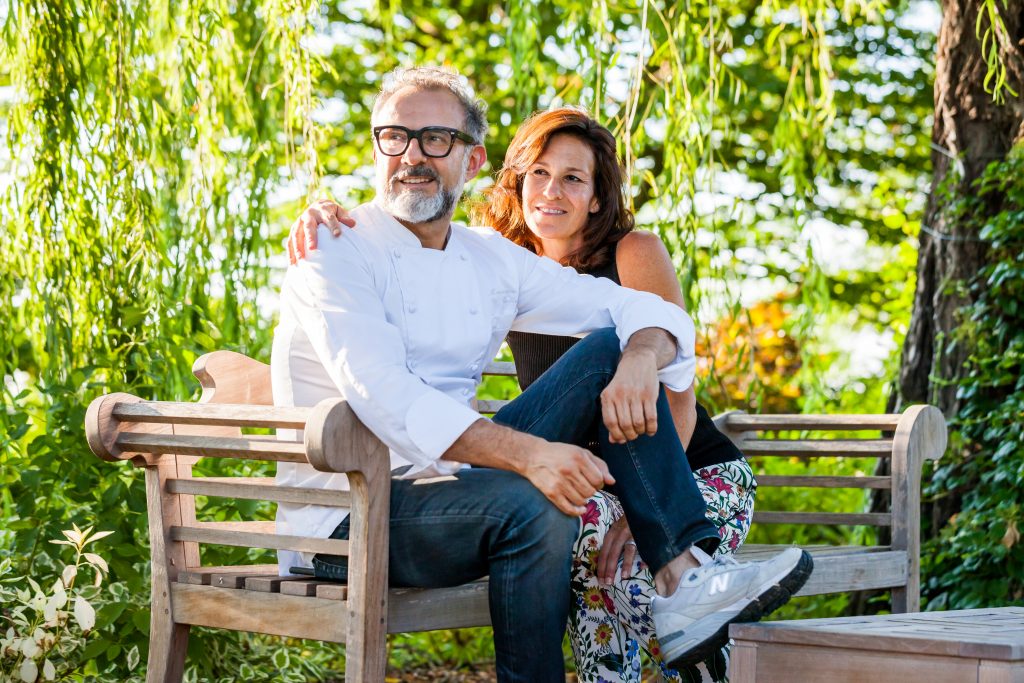
Again, the concept of sharing remains crucial—sharing a meal; sharing the stunning art, music and design; sharing the glorious surroundings. There’s an element of home here, even for guests who have never visited the region. “The thing about the Emilian landscape is that it is friendly, enjoyable. You can relax here,” Gilmore (who is originally from Washington, DC) tells us. “When people come and stay in Casa Maria Luigia, they often booked for one night because they have dinner in Osteria Francescana or have dinner here. Then they ask if there’s a room for another night or two because there’s something very slow about this landscape. It envelops you, and time slows down.”
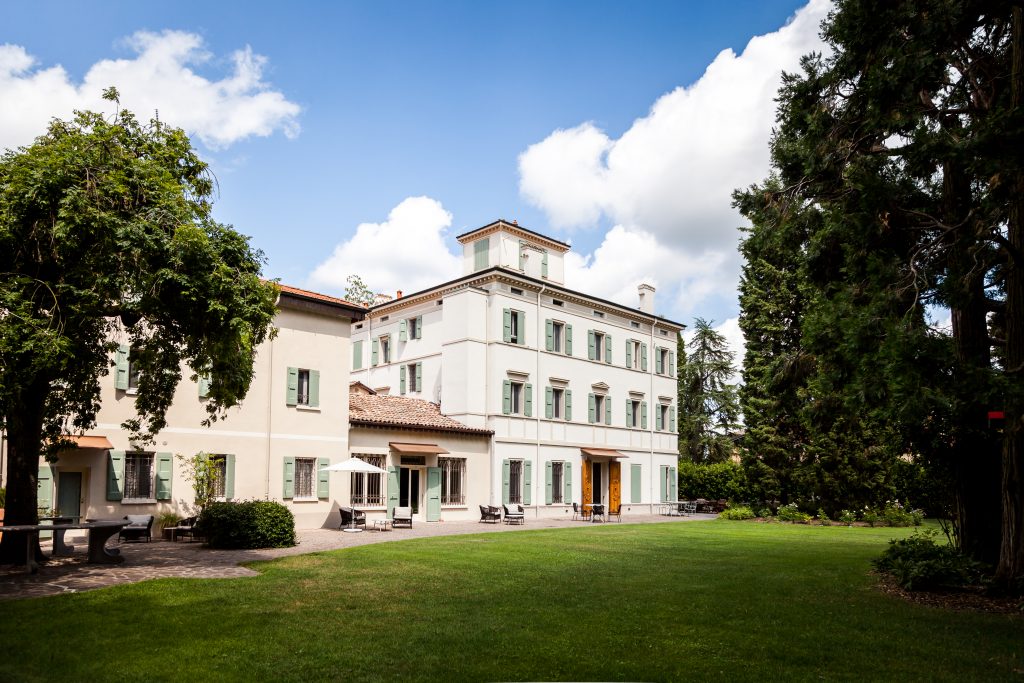
At the same time, the region is bursting with activity. “One of my favorite pastimes besides biking into the hills is going along the river banks because, in Emilia Romagna, they are raised high so you get a completely different view of the landscape from above. You see the fruit trees. You see the people working in the landscape,” she says. “When you go to downtown Modena, you see how busy the market is. It’s not busy with tourists; it’s busy with people buying food and eating food and socializing, riding their bicycles to work. There’s this sense of a very dynamic and alive part of Italy that’s remaining true to tradition, but moving forward.”

Bottura was born and raised in this region, and it’s also home to some of his and Gilmore’s most dynamic venues. “We are in an extraordinary territory in the middle of the Food Valley,” Bottura says. “We only opened the possibilities. We opened the doors to the unexpected. The doors of the Franceschetta58 to give young people the chance to express themselves. The doors of the Osteria Francescana with contemporary cuisine. The doors of tradition with Casa Maria Luigia, with the 25-year menu and the oven.”
While they have stakes in endeavors all over the world, Modena seems to be home for the duo, with Casa Maria Luigia playing a special role. Bottura says, “Always keep thinking about what you can do with what you have—and never forget where you are.”
Hero image courtesy of Marco Poderi
